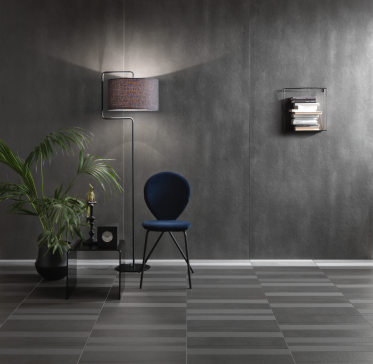
Brighton Beach House by BG Architecture uses INAX tiles for its exterior. Photograph by Dianna Snape.
Surviving earthquakes, salt and sun – tiles made from natural elements have been the building blocks of some of the world’s most iconic public buildings so when we consider our own facades – ceramic tiles present a seriously attractive option.
Think about it, if the Sydney Opera House can cast its complex sails to the seas of Sydney Harbour and Frank Lloyd Wright’s Imperial Hotel in Tokyo can withstand a tremor or two then surely there is something to be gained from these buildings on a more personal level. The exterior of both of these iconic buildings are formed using thousands, if not millions of tiles, and yet they are completely different in form and the environment they are exposed to.

The exterior and interior of BG Architecture's Brighton Beach House. Photograph by Dianna Snape.
For anyone who has lived in a typical Australia red-brick coastal home, you will know that old bricks rust. This is a result of the earthen-elements that went into forming them – materials that contain a metal content which is highly corrosive but actually generates the hues of our suburbs. Of course, brick manufacturing has changed over the last few years and so has the production of tiles.
The first benefit of an exterior composed of ceramic tiles is that the materials are more refined, with less metal content, meaning less chance of degradation. Perfect for the beach house, the pool-side pavilion, and yes – it has worked for everything from the Sydney Opera House to the Brighton House by Melbourne’s BG Architecture.

Frank Lloyd Wright's Imperial Hotel in Tokyo, the first building in Japan to use ceramic tiles as its exterior. Photograph courtesy Artedomus.
Unlike traditional pottery, tiles appropriate for exterior use are unglazed and – reverting to the topic of colour – it is the source of the clay that forms the groundwork for their appearance. As an example, the tiles used for Wright’s Imperial Hotel were made by a family-owned business, south of Nagoya (Japan) where pottery is famous for the reddish tones of the iron-rich clay in that area. Digging deeper, Wright sourced clay close to the family’s town of Tokoname that produced a more yellow tone – giving the hotel its distinct appearance though still remaining resilient to one of Japan’s largest earthquakes.
And while the source of tiles and their production is incredibly important – it is also their design that has an impact when we think about our homes. INAX, the company formed out of Wright’s Imperial Hotel, have been pioneers of many things. The Hotel, being the first Japanese building to use tiles for its exterior was one, and secondly, they invented shower-toilet technology yet their spirit of monozukuri (making things) doesn’t stop there.
INAX – having developed exterior tile cladding which is, for the tech-talkers, a plug-and-play system of slim-line tiles which clip onto wall framing – are constantly on the move with technology and tradition. Durable, lightweight and available in a range of profiles it is the flexibility inherent in the source material that is really appealing.
In traditional terms their profiles, which begin at 6mm, are bound by mortar and as a result are more tolerant to shifts of the earth. Yes, lucky for Frank Lloyd Wright but also lucky for anyone building on unstable ground here in Australia.
This also present something aesthetically appealing, being the inspiring composition of Japanese architecture. If you have ever wandered the suburbs of Tokyo and beyond – you may have noticed that the tile facades end perfectly. This is due to the fact houses are designed from the tile-sheet not the property boundary. It explains a lot but it is also accessible as INAX will alter your plans to accommodate your desires and their proportions.
_
INAX tiles are available exclusively in Australia through ARTEDOMUS
WRITTEN BY HouseLab










